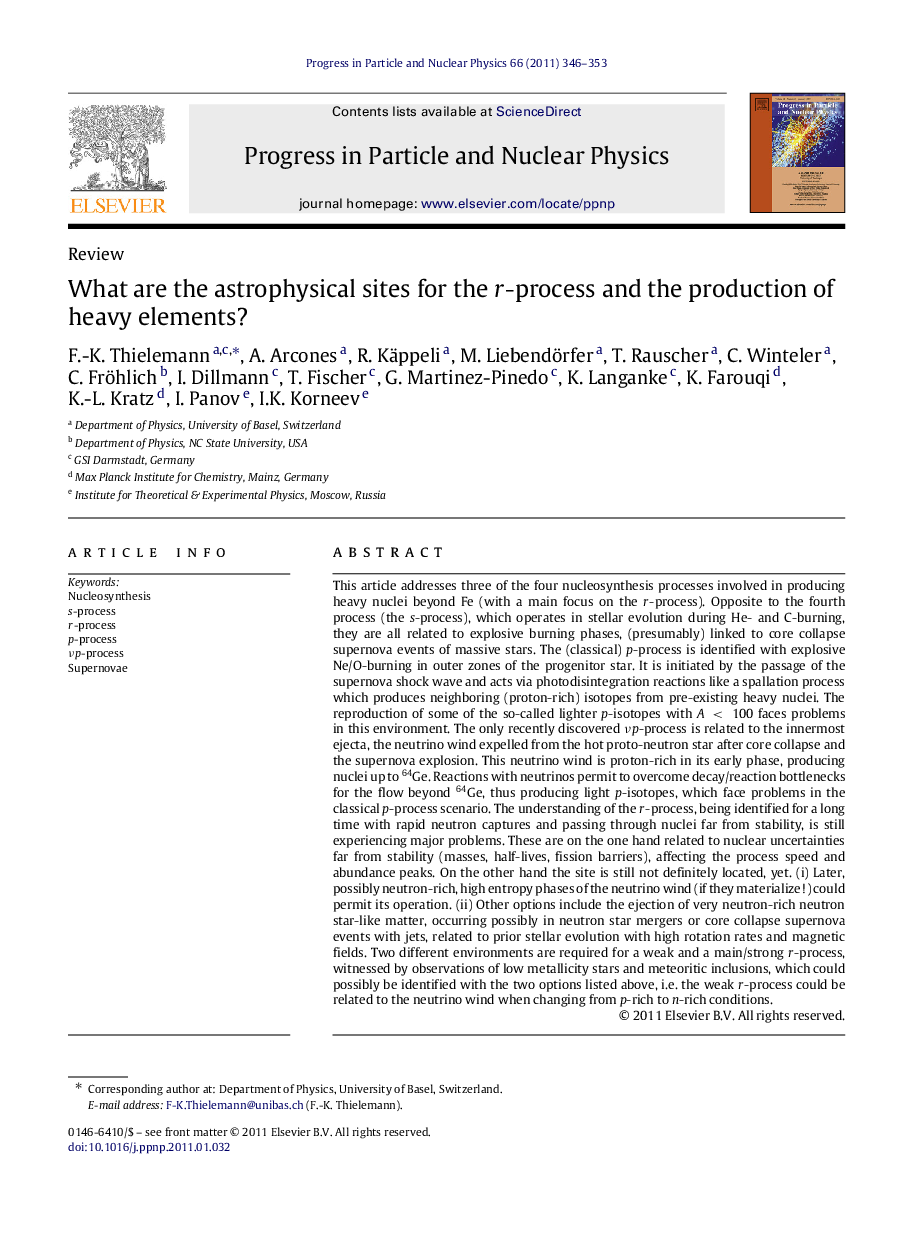| Article ID | Journal | Published Year | Pages | File Type |
|---|---|---|---|---|
| 1854524 | Progress in Particle and Nuclear Physics | 2011 | 8 Pages |
This article addresses three of the four nucleosynthesis processes involved in producing heavy nuclei beyond Fe (with a main focus on the rr-process). Opposite to the fourth process (the ss-process), which operates in stellar evolution during He- and C-burning, they are all related to explosive burning phases, (presumably) linked to core collapse supernova events of massive stars. The (classical) pp-process is identified with explosive Ne/O-burning in outer zones of the progenitor star. It is initiated by the passage of the supernova shock wave and acts via photodisintegration reactions like a spallation process which produces neighboring (proton-rich) isotopes from pre-existing heavy nuclei. The reproduction of some of the so-called lighter pp-isotopes with A<100A<100 faces problems in this environment. The only recently discovered νpνp-process is related to the innermost ejecta, the neutrino wind expelled from the hot proto-neutron star after core collapse and the supernova explosion. This neutrino wind is proton-rich in its early phase, producing nuclei up to 64Ge. Reactions with neutrinos permit to overcome decay/reaction bottlenecks for the flow beyond 64Ge, thus producing light pp-isotopes, which face problems in the classical pp-process scenario. The understanding of the rr-process, being identified for a long time with rapid neutron captures and passing through nuclei far from stability, is still experiencing major problems. These are on the one hand related to nuclear uncertainties far from stability (masses, half-lives, fission barriers), affecting the process speed and abundance peaks. On the other hand the site is still not definitely located, yet. (i) Later, possibly neutron-rich, high entropy phases of the neutrino wind (if they materialize!) could permit its operation. (ii) Other options include the ejection of very neutron-rich neutron star-like matter, occurring possibly in neutron star mergers or core collapse supernova events with jets, related to prior stellar evolution with high rotation rates and magnetic fields. Two different environments are required for a weak and a main/strong rr-process, witnessed by observations of low metallicity stars and meteoritic inclusions, which could possibly be identified with the two options listed above, i.e. the weak rr-process could be related to the neutrino wind when changing from pp-rich to nn-rich conditions.
